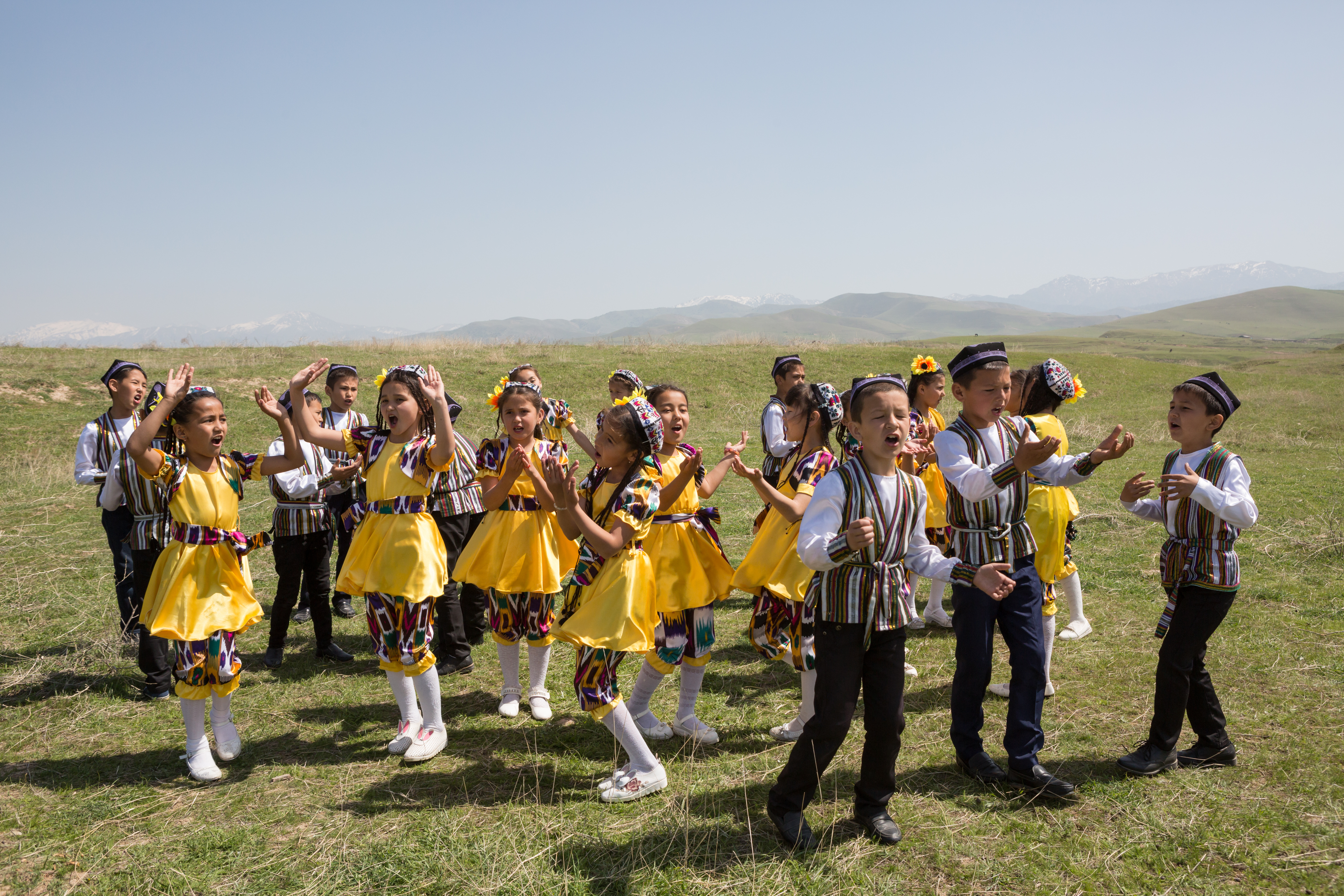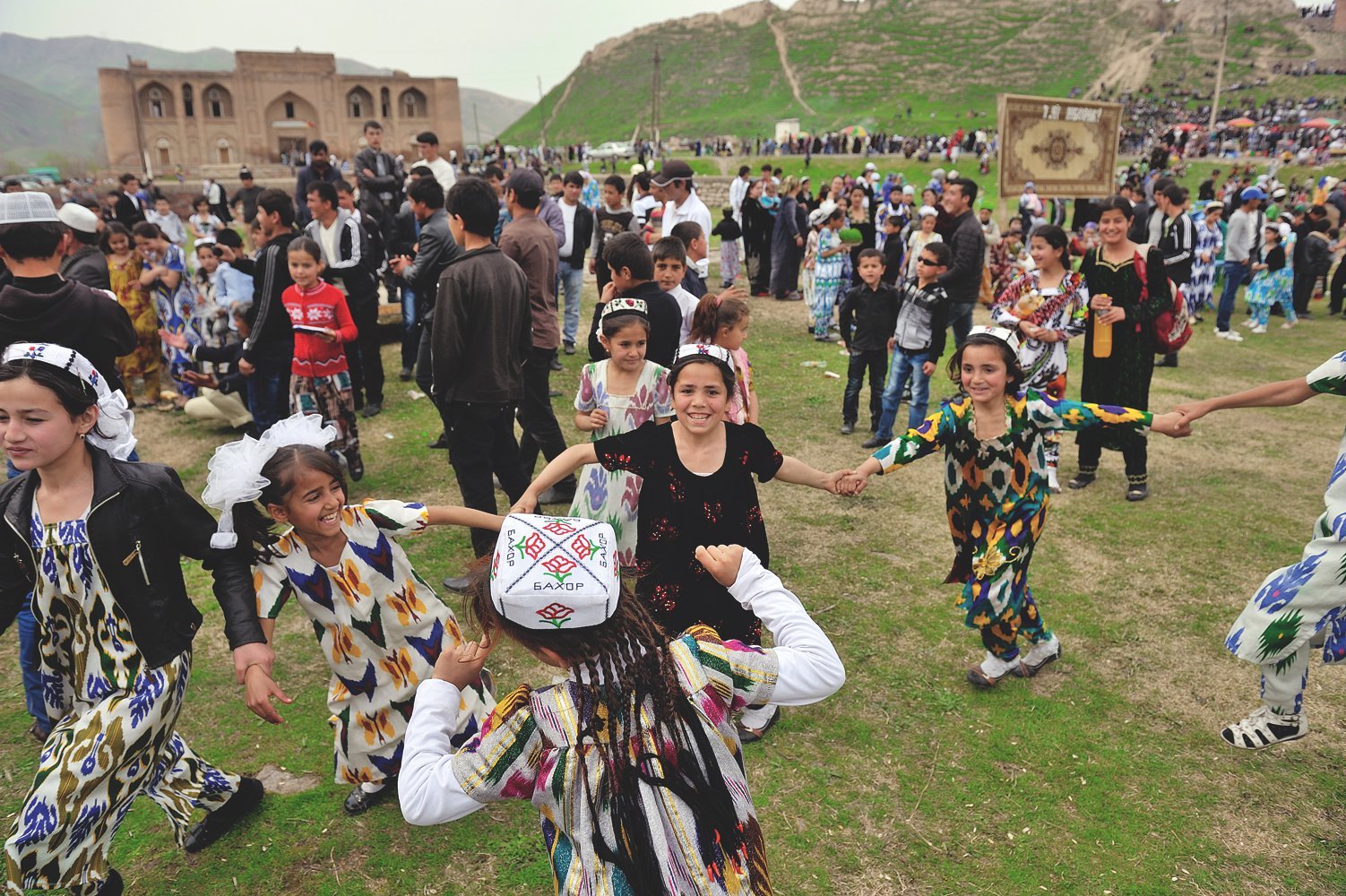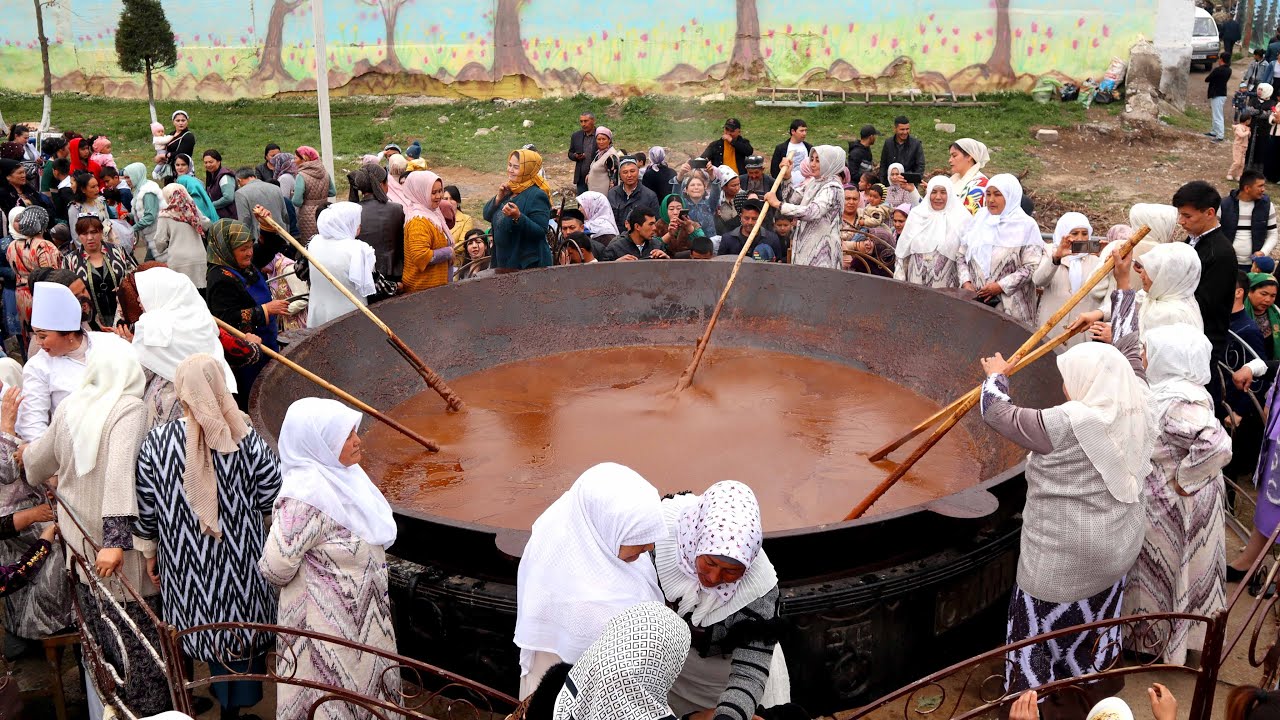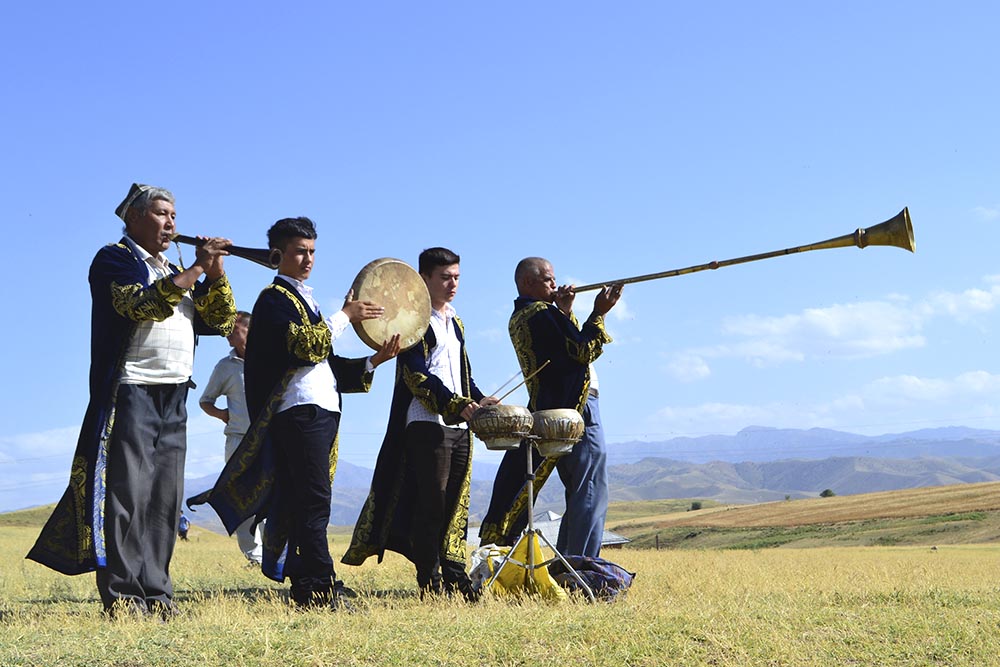
Culture • 02 April, 2025
Nowruz: A celebration of renewal and unity
Spring in Uzbekistan begins with one of the most vibrant events of the year — the ancient holiday of Nowruz. Symbolizing the rebirth of nature and the renewal of life, it has become an integral part of the culture of the peoples living in many countries such as Azerbaijan, Albania, Afghanistan, Kazakhstan, Kosovo, Iran, Iraqi Kurdistan, India, Tajikistan, Uzbekistan, Kyrgyzstan, Turkmenistan, and Turkey. Moreover, Nowruz is also celebrated as a regional holiday in Georgia, Macedonia, Mongolia, Pakistan, Russia, and the Xinjiang Uyghur Autonomous Region of China. We decided to delve into historical research to understand why this day is not only connected to the vernal equinox but also carries with it a much deeper meaning.
History and legends
The name "Nowruz" literally translates from Persian as "new day", and symbolizes the beginning of a new cycle of life. It first appeared in Persian sources in the 2nd century AD, though the holiday itself was already celebrated during the Achaemenid dynasty (648–330 BC) as a Zoroastrian festival. Over the centuries, Nowruz has been associated with the start of the new year and was celebrated along the entire length of the Great Silk Road.
According to legends, Nowruz is connected with the creation of the world and the beginning of life. In the Avesta — the holy book of the Zoroastrians, which tells of the creation of the universe and all living beings — it is stated: "Ahura Mazda created the world and all its components in six stages, but this did not happen all at once; it occurred at irregular intervals in six phases." These six stages of creation are called the "six festivals" or "gahanbar", and they are distributed as follows:
1) The first period of creation lasts forty-five days after the celebration of Nowruz, during which the sky was created.
2) The second period occurs one hundred and five days after Nowruz and is associated with the creation of water.
3) The third stage of creation occurs one hundred and eighty days after Nowruz and is devoted to the creation of the Earth.
4) The fourth period occurs two hundred and ten days after Nowruz, when plants were created.
5) The fifth stage occurs two hundred and ninety days after the festival, when animals were created.
6) The sixth stage of creation falls on the three hundred and sixty-fifth day after Nowruz, which marks the end of the year and the creation of mankind. This stage is called "Hamaspath maidyam", meaning "equinox".
And every year in spring, it was customary to celebrate the renewal of life on Earth, which was reflected in these six manifestations: the sky, water, earth, plants, animals, and mankind. Moreover, there are several well-known Persian legends. One of the most popular is the story of King Jamshid, who gained great power over jinns and humans. On the day when the sun was in Aries, he ascended the throne, and his light illuminated the entire land. The people called this day "new", symbolizing the beginning of a new era. It is also interesting to mention the Kurdish legend of King Azdahak, against whom the people rebelled, lighting bonfires in the mountains to celebrate their liberation. According to the most widespread version, Nowruz is associated with the cult of the Sun and the name of the legendary prophet Zarathushtra (Zoroaster), which in Greek tradition means "Son of the Star". On this day, the ancient Aryan kings would have worn a crown with images of the annual solar cycle on their heads, participated in a divine mass in the Temple of Fire. Over time, this holiday became firmly established among the peoples of Central Asia and the Caucasus, who were influenced by Zoroastrian culture. The origin of Nowruz and its connection to astronomy Among other theories, one suggests that Nowruz originated more than 5,000 years ago in the region of Ariana (Editor's note: presumably the area of Bactria), initially spreading as an agricultural festival linked to the creation of a calendar based on astronomical observations. Unlike the Gregorian, Arab, and Jewish calendars, it was tied to the positions of the Sun and planets, with particular attention given to Saturn, which the Persians referred to as Keyvan — "Lord of Time". Each year in this calendar had its own symbol—a sacred animal serving as the year's protector. Nowruz also has roots in fire worship, which was particularly relevant during the Achaemenid (6th–4th centuries BC) and Sassanian (3rd–7th centuries AD) eras. Chronicles mention celebrations of the spring/vernal equinox, during which rulers presented gifts to the Shahanshah (Editor's note: an ancient Persian title equivalent to "emperor"). This day became the official New Year holiday, and the custom of celebrating it spread among all peoples influenced by the Persian Empire. Preparation for the holiday Nowruz has its origins from the ancient forms of nature worship, particularly fire, making it one of the oldest and most symbolically rich holidays. It is not just a day of celebration but a vital ritual that, over centuries, has accumulated traditions and beliefs, giving rise to numerous customs and ceremonies associated with fertility, renewal, and reverence for the forces of nature. It is believed that the brighter and more joyful the Nowruz is celebrated, the more generous nature will be in return. At the same time, the holiday embodies the triumph of good over evil and symbolizes the birth of a new world. The rituals of Nowruz are described in detail in the "Avesta", but information about them became available owing to the French linguist Abraham Hyacinthe Anquetil-Duperron (1731–1805), who translated it into French. His translation, published in Paris in 1771 and accompanied by scholarly comments, was unique for its time and opened a new chapter in the study of ancient culture and traditions. From this work, we learn that Nowruz requires meticulous preparation. Weeks before the holiday, "hashars"—collective efforts to clean, improve and landscape the areas—are held across the country. People tidy up and decorate their homes and streets, plant trees and flowers. This activity culminates in communal feasts with aromatic pilaf, songs, and dances. Traditions and treats Many traditions and customs of Nowruz are linked to ancient legends. For example, dances and performances depicted myths of the deity Siyavush, symbolizing life, death, and rebirth. These legends are reflected in national dances, such as Katta Uyin ("The Great Game"), which remains an important part of stage performances to this day. Overall, Nowruz attracts the attention of scholars and art historians due to its connection with dance compositions that narrate the life cycle—from birth to rebirth. Every gesture and movement in these dances carried profound sacred meaning. The same "Katta Uyin" dance has preserved elements of ancient rituals and symbolizes the cycles of life, death, and rebirth. This dance existed even during the era of Alexander the Great (3rd–4th centuries BC). In the early 20th century, based on these ancient rhythms and movements, folk artists Tamara Khanum and Usta Alim Kamilov created a staged version of "Katta Uyin". Today, this dance, choreographed by the legendary Mukarram Turgunbaeva, remains one of the most beloved and sought-after performances in the repertoire of the State Dance Ensemble "Bakhor". Filled with grace and dignity, the dance, despite losing its original storyline, has become a true symbol of Uzbek choreography. It is an important part of Uzbekistan's cultural heritage, as is the Nowruz holiday itself, which encompasses numerous rituals and traditions that reflect the deep historical and spiritual connections of the people with nature and time. Traditionally, March in Zoroastrian culture was called "Farvardin" and was dedicated to ancestors. It was believed that during the week preceding Nowruz, the souls of deceased relatives return to earth, and during this time, people make offerings and ask for their help. The main dish of Nowruz is sumalak, prepared by collective joint effort. This sweet dessert made from sprouted wheat is cooked overnight in large cauldrons. The process is accompanied by jokes, songs, and dances, and anyone who finds a nut or a small pebble in the dish can make a wish. Traditionally, women take turns stirring the sumalak to prevent it from burning, and in the morning, it is shared among everyone who participated in its preparation. The celebration begins before dawn, when the entire family, dressed in new clothes, gathers around the table, which is set with new dishes. The table set up on Nowruz is called “haft-sin". The table is set with seven items, each beginning with the letter "sin" in the Persian alphabet. These include rue seeds (sipand), apple (sib), caraway seeds (siyahdane), wild olive (sanjud), vinegar (sirke), garlic (sir), and sprouted grain (sabzi). These seven magical items symbolize an offering to the Sun, which, by accepting them, ensures a bountiful harvest in the new year. It is also important to feed not only close family but also neighbors and guests, and to help the poor and the elderly. Traditionally, before Nowruz, one should repent for his/her sins, reconcile with enemies, repay debts, and forgive others. During the days of Nowruz, good angels (farishte) bring abundance and prosperity to those who are pure in heart, who have freed their hearts from grievances, and who maintain order in their homes. People believed that the clean environment surrounding a person reflects the clarity of his inner state, so before the holiday the owners tend to keep their houses clean, whitewash the walls and make minor repairs. Another interesting custom is to invite the first guest into the house, who is considered a symbol of future well-being. If the guest is kind and cheerful, the year promises to be successful. Holiday festivities The grand celebrations of Nowruz were widespread in Sogdiana and Ancient Khorezm. These celebrations included various rituals, with singing, music, and dance playing a major role. Researchers have documented descriptions of this holiday: "...the celebration begins with a grand procession attended by the governor. Dervishes and Qalandars lead the way, singing and dancing; they are followed by officials and akhuns (Editor’s note: high-ranking scholars) ... The festivities culminate with songs and dances performed by both men and women," or: "The people, dressed in new clothes and adorning their hats with flowers, gather at the highest places outside the city; there, to the sounds of tambourines/drums, nays (Editor’s note: the nay is an Uzbek folk musical instrument similar to a flute), and other musical instruments, they enjoy horse races and archery contests". Nowruz in modern Uzbekistan Over the centuries, our history has undergone significant changes: dynasties have risen and fallen, religious beliefs have changed, yet the tradition of celebrating Nowruz has been preserved and deeply rooted itself in the daily lives of the peoples of Central Asia. To this day, it is celebrated on a grand scale with state support. In modern Uzbekistan, mass celebrations are held annually on March 21. Concerts, exhibitions, and fairs are organized in parks and squares. Performances by tightrope walkers and maskharabozes (traditional comedians/clowns), sports competitions, and national dances create an atmosphere of joy and merriment. Creative groups and cultural centers performances showcasing the richness of Uzbekistan's multicultural heritage are especially popular. It is important to note that this is a time when people not only celebrate but also reflect on spiritual values such as caring for nature, helping those in need, forgiving grievances, and doing good deeds. In 2009, UNESCO included Nowruz in the Representative List of the Intangible Cultural Heritage of Humanity, emphasizing its unique significance for the entire world. Nowruz connects the past and the present, nature and culture, people and their traditions. If you find yourself in Uzbekistan during the days of celebration, you will undoubtedly feel the magic of this extraordinary time, filled with warmth, joy, and hospitality.



